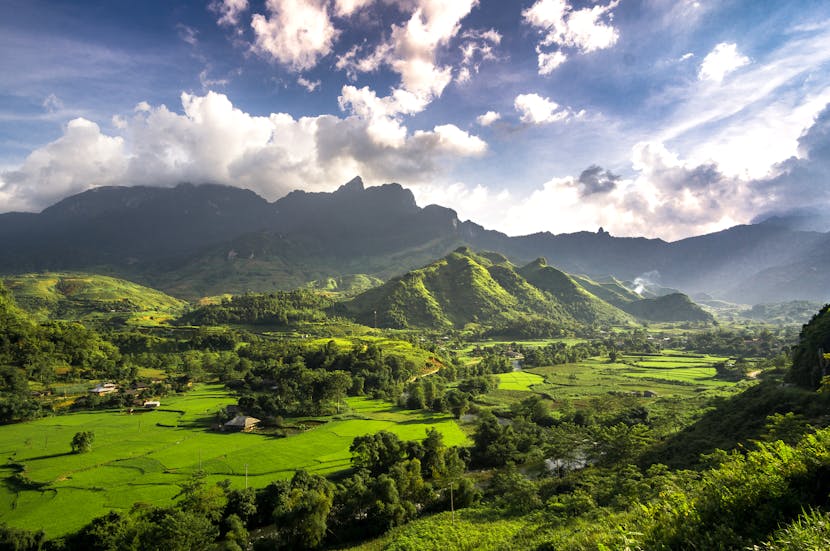In 2024, the tourism industry in Asia and the Pacific has emerged as a leading force in the global recovery of international travel. Countries across the region, including Vietnam, Indonesia, Fiji, Japan, South Korea, Maldives, Thailand, India, and Sri Lanka, have witnessed a significant surge in international tourist arrivals. Relaxed travel restrictions, increased air connectivity, and a strong post-pandemic demand have driven record-breaking numbers, with both leisure and business travel seeing substantial growth. These destinations, known for their natural beauty, cultural experiences, and expanding tourism infrastructure, have been at the forefront of the global travel recovery.
The United Nations World Tourism Organization (UNWTO) reported that international tourism arrivals in 2024 reached 96% of pre-pandemic levels within the first seven months, with approximately 790 million tourists traveling between January and July. This represents an 11% increase from 2023 and brings the sector to just 4% below the 2019 figures. The resurgence was fueled by high demand in Europe and the reopening of key markets in Asia and the Pacific, despite ongoing economic uncertainties and geopolitical challenges.
South Asia has shown remarkable recovery, achieving 92% of pre-pandemic tourist levels by mid-2024. Countries like India, Sri Lanka, Nepal, and the Maldives have become popular destinations for both leisure and spiritual travel. India, with its diverse attractions and wellness tourism, has seen success through campaigns like “Incredible India” and the growing popularity of its yoga, meditation, and Ayurveda retreats. Sri Lanka has bounced back from political and economic challenges, while the Maldives has seen a 19% increase in arrivals compared to 2019, thanks to its luxury tourism appeal.
Southeast Asia has also made a strong recovery, reaching 88% of its pre-pandemic tourism levels. Thailand, Indonesia, and Vietnam have capitalized on their cultural richness and affordability to attract international tourists. Thailand’s marketing strategy, “Amazing Thailand,” has reassured travelers of their safety, while Vietnam has promoted eco-tourism and adventure travel, benefiting from increased air connectivity. Bali remains a key attraction in Indonesia, continuing to draw tourists focused on wellness and relaxation.
Oceania, including Fiji, Australia, and New Zealand, has seen an 83% recovery in tourist arrivals. Fiji’s 8% growth in arrivals compared to 2019 highlights the island’s sustained popularity, particularly among honeymooners and families. Australia and New Zealand have also launched aggressive tourism campaigns, leveraging their natural beauty and adventure tourism offerings to capture the international market.
North-East Asia has seen a slower recovery, with 75% of pre-pandemic levels achieved by mid-2024. However, Japan’s 7% increase in international arrivals during the first seven months of the year, supported by a favorable exchange rate and cultural appeal, has contributed significantly to the region’s progress. South Korea and Taiwan have also played a role, particularly through domestic tourism and increased international connectivity.
Key indicators of the tourism industry’s recovery in 2024 include international air capacity, which has reached 99% of 2019 levels, according to the International Air Transport Association (IATA). Global hotel occupancy rates have also recovered, with STR, a leader in hospitality analytics, reporting a 71% occupancy rate in August 2024, slightly exceeding the 69% rate in August 2023.
The depreciation of the Japanese yen has made Japan an attractive destination for tourists from the U.S. and Europe, offering better value for money. The global economic recovery, along with increased disposable income and the desire for travel experiences after the pandemic, has driven tourists to spend more on international trips, particularly in destinations that offer unique cultural and natural experiences.
Despite the promising recovery, the rapid influx of tourists raises concerns about overtourism, environmental degradation, and strain on local communities. Sustainable tourism practices are essential to ensure that tourism growth benefits local populations while protecting natural habitats and cultural heritage. Governments and tourism boards are focusing on promoting responsible tourism, encouraging visitors to explore less-crowded destinations, and investing in green tourism initiatives.
The tourism sector in Asia and the Pacific has demonstrated incredible resilience in 2024, with many subregions recovering strongly. Countries like the Maldives, Japan, and Fiji have led the charge in this recovery, thanks to favorable economic factors, increased air connectivity, and strong marketing campaigns. As tourism continues to grow, the industry must focus on sustainability to ensure long-term success while preserving the unique attractions that draw millions of visitors to the region each year.






